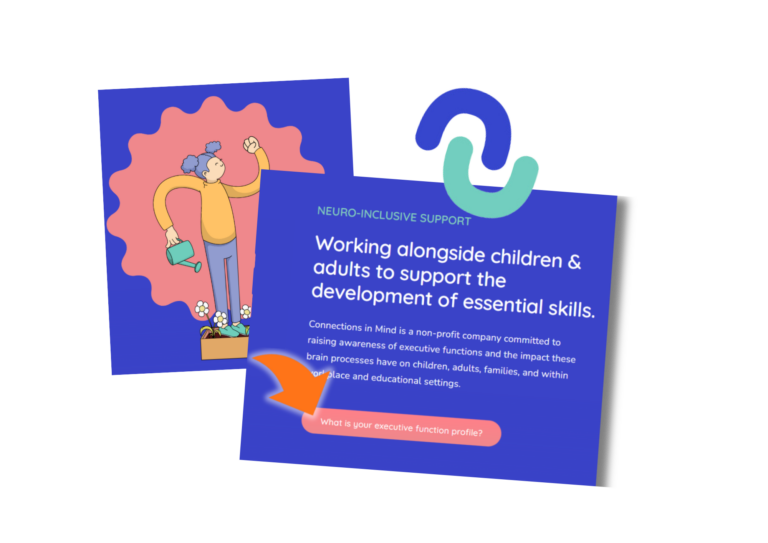Myers-Briggs personality test
The Myers-Briggs personality test, also known as ‘Myers-Briggs Type Indicator’ (MBTI), is one of the most popular assessments used in the business world. The goal of the Myers-Briggs test is to indicate differings in psychological preferences and is often grounds for evaluating yourself and besides that your employees.
According to the Myers Briggs Corporation, 2 million assessments are administered annually. Keep reading to learn more about the Myers-Briggs test or get started immediately by constructing your own assessment using our tool.






What exactly is a Myers-Briggs personality test?
The Myers-Briggs personality test is a personality assessment that consists of 16 different personality types. Some are more common than others, but every single personality is unique. The test was originally created by Katharine Cook Briggs and her daughter Isabel Briggs Myers who based their research on the theories of Carl Gustav Jung (Psychological Types, 1921).
The outcome of this assessment is based on four dichotomies (explained in the section below):
- Extraversion vs Introversion
- Sensing vs Intuition
- Thinking vs Feeling
- Judging vs Perceiving
The Myers-Briggs personality test is universally known and has been around for a while. But did you know that about 88% of Fortune 500 companies use the Myers-Briggs test to enhance their teams and organization?
The four dichotomies of the Myers-Briggs test
E / I – Extraversion or Introversion
First of all, we have the difference between people who turn inwards (Introverts) and people who turn outwards (Extroverts) when facing a social situation. This dichotomy is also called “Attitudes”. People who prefer extraversion tend to draw energy from an action. They are focused on the outside world, prefer oral communication and are often sociable and expressive.
On the other hand, there are people who prefer introversion. They are focused on their own perceptions and tend to think for themselves. Furthermore, they prefer written communication and will only take initiative when something is important for them.
S / N – Sensing or Intuition
Secondly, this pair has a perceiving or information-gathering function. It describes how we interpret information. We can either gather information by observation (sensing) or by trusting our intuition.
People who prefer sensing are focused on facts while making detailed and careful decisions. They are not affected by hunches at any possible moment because they only trust information that is based on experiences or wisdom from their past.
People who prefer intuition tend to draw conclusions quickly based on their hunch. They are most likely to have more imagination and are often verbally creative.
T / F – Thinking or Feeling
Thirdly, this pair has a decision-making function. By collecting data from the information-gathering functions (sensing or intuition), people are able to make rational decisions. These rational decisions are the result of either of these two preferences:
The preference for thinking means that you tend to be more analytical than others. You make decisions as reasonable and as logical as possible and are therefore relentless. Problems are there to be solved, but thinking people resolve problems logically with none to little feelings involved.
By contrast, those who prefer feeling look at situations from the inside rather than the outside. They are compassionate and feel a lot of sympathy for others. Their way of working is to weigh down different possibilities in order to find perfect harmony and to achieve a consensus.
J / P – Judging or Perceiving
Last but not least, we have two lifestyle preferences: judging or perceptive. This pair goes hand-in-hand with all other three dichotomies. We could have the preference for using the judging function (thinking or feeling) or for using the perceiving function (sensing or intuition). Both preferences are situated in the outside world (extraversion).
People who prefer the judging function are more structured and organized. They tend to reduce stress levels using a systematic way of working and applying deadlines.
People who prefer the perceiving function are more spontaneous and flexible. They tend to get energy from time pressure and are often open for changes of any kind.
Why use Pointerpro to create a Myers-Briggs Test?
Why use Pointerpro to create a Myers-Briggs test?
Immediate feedback
Find out straight away if a candidate is suitable and automatically provide them with a useful feedback report regarding further training and development.
White label option
Remove any mention of Pointerpro with our White Label option: Your company name in the URL, branded emails and branded reports.
Use intelligent integrations
Automatically transfer all data to all your favorite tools and apps via Zapier.
The Four dichotomies of the Myers-Briggs test
… you may feel uncertain about your results
Sometimes specific circumstances can have an impact on the preferences of the respondents. That way, after taking the assessment, they could feel uncertain about their results. There are a few reasons to explain this feeling of doubt:
- Stage of life: There is always room for self-development during your career. Therefore your respondents can still be exploring their preferences and this can have a major effect on their behaviour, thus also your results.
- Feeling pressured by external factors such as a boss, parents, environment, … Make sure to make your respondents feel comfortable with your questionnaire (e.g. by telling them their information will remain confidential).
- They may be under (a lot of) stress. This can cause them to not behaving typically. Same as with the first reason, you have to comfort your respondents as much as possible.
… you want to know how this could benefit you and your organization
Information gathered from this personality test, can help you to get a better understanding of yourself or even your business and the people around you. It determines your strengths and weaknesses as it promotes self-development. Once your result is determined, you are able to enhance your skills, such as decision-making, time-management, your approach of work and many more!
Some businesses use it to establish their teams. For a manager, it’s important to know what type of personalities your employees have in order to manage and motivate them. A team with different personalities need a different approach. With the aid of the Myers-Briggs personality test, you are sure how to collaborate with your team members or employees in a proper, efficient and effective way.
Here's what our customers say
Recommended reading

What is an intrapreneur? Boost innovation and growth by encouraging internal consulting with these tips
Last year, our sales team asked our Product Marketer Chris to build a spreadsheet overview
5 best practices for your survey results presentation: A guide for consultants, HR professionals, marketers and more
In today’s business world, understanding your customers is crucial. Collecting data can be challenging, but

How Connections In Mind benefits the community interest through a digital mindset and a longitudinal assessment
The fact that communities benefit from diversity should not be news to anybody. One type
Create your first interactive questionnaire today.


